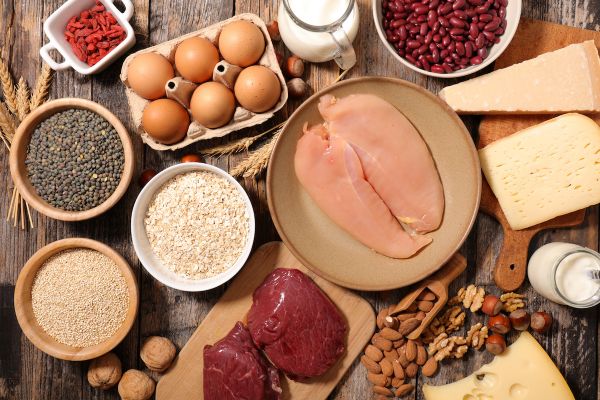When looking to eat a healthy diet on a budget, careful meal planning and smart purchasing play big roles!
Taking the time to plan meals ahead of time has several advantages: You can prepare healthier meals, save time and money, reduce stress, make less frequent trips to the grocery store, and eat out or order takeout less often. It’s important to pick meals that you and your family will enjoy, and by planning ahead of time you can fit pricier foods into your budget and enjoy meals that provide the best value.
Steps to meal planning
- Take a look at what is in your pantry, refrigerator and freezer. Make a list of the foods and ingredients you already have on hand.
- Check for sales, store specials or coupons. These can be inspiration for meals for the week. However, only buy sale items that you need or like and will actually use!
- Think about your schedule for the week. Which days are busier? Are there days you might have more time to prepare? Do you have plans to get restaurant food this week?
- Decide what meals to make. Aim to make half of each meal consist of fruits and vegetables most of the time. Then include whole grains and lean proteins such as seafood, beans, tofu, chicken, turkey, lean beef or pork. Try to go meatless one or more days per week with some of these ideas: enjoy rice and beans, add lentils to soups, or have breakfast for dinner (think omelet with veggies and whole grain toast).
- Plan to use leftovers. We’ll discuss make-ahead meals and ways to use leftovers more in next month’s article.
- Make a shopping list based on your plan, considering what you have on hand. Try to organize your list based on where items are in the grocery store where you shop.
Once you have your meals planned and your list made, be sure to bring your list to the grocery store with you and stick to it! Try to avoid going down aisles that don’t have items on your list. When you get home, store the refrigerated and frozen foods right away to preserve quality and food safety. Consider doing some of the prep when you get home, such as washing or cutting produce or portioning out bulk purchases, to save you time and stress down the road.
How to save money at the grocery store
- Check sell-by/use-by dates to select the freshest products
- Look at high and low shelves; eye-level products might be more expensive.
- Compare unit prices. Unit prices are the total price divided by the size or the count of the item in the package. This helps you compare the prices of products that come in different sizes.
- Consider buying larger sizes or in bulk. Purchasing larger quantities is often cheaper, but you won’t save any money if it goes to waste. Only buy foods in bulk or larger sizes if they are foods you eat regularly, you have room to store them in the refrigerator, freezer, or pantry, and you’re sure will actually use the whole amount before it goes bad. Americans throw out about 14% of the food they buy in grocery stores — throwing away an average of about $500 every year. Non-perishables or stable items like peanut butter, grains or canned tuna might be good options to buy in bulk, while you might want to be more cautious with foods like fresh produce or milk.
- Sign up for store rewards programs. These are usually free and will give you better prices.
- Eat before you go grocery shopping to avoid shopping when you are hungry.
- Look for store brands.
- Buy staple items (pasta, beans) when they are low in price, not necessarily waiting until you run out.
Check back next month for time-saver tips for the kitchen and make-ahead meal ideas!
More nutrition tips
Our nutrition team can play an important role in your care — before, during and after treatment.
Learn More

